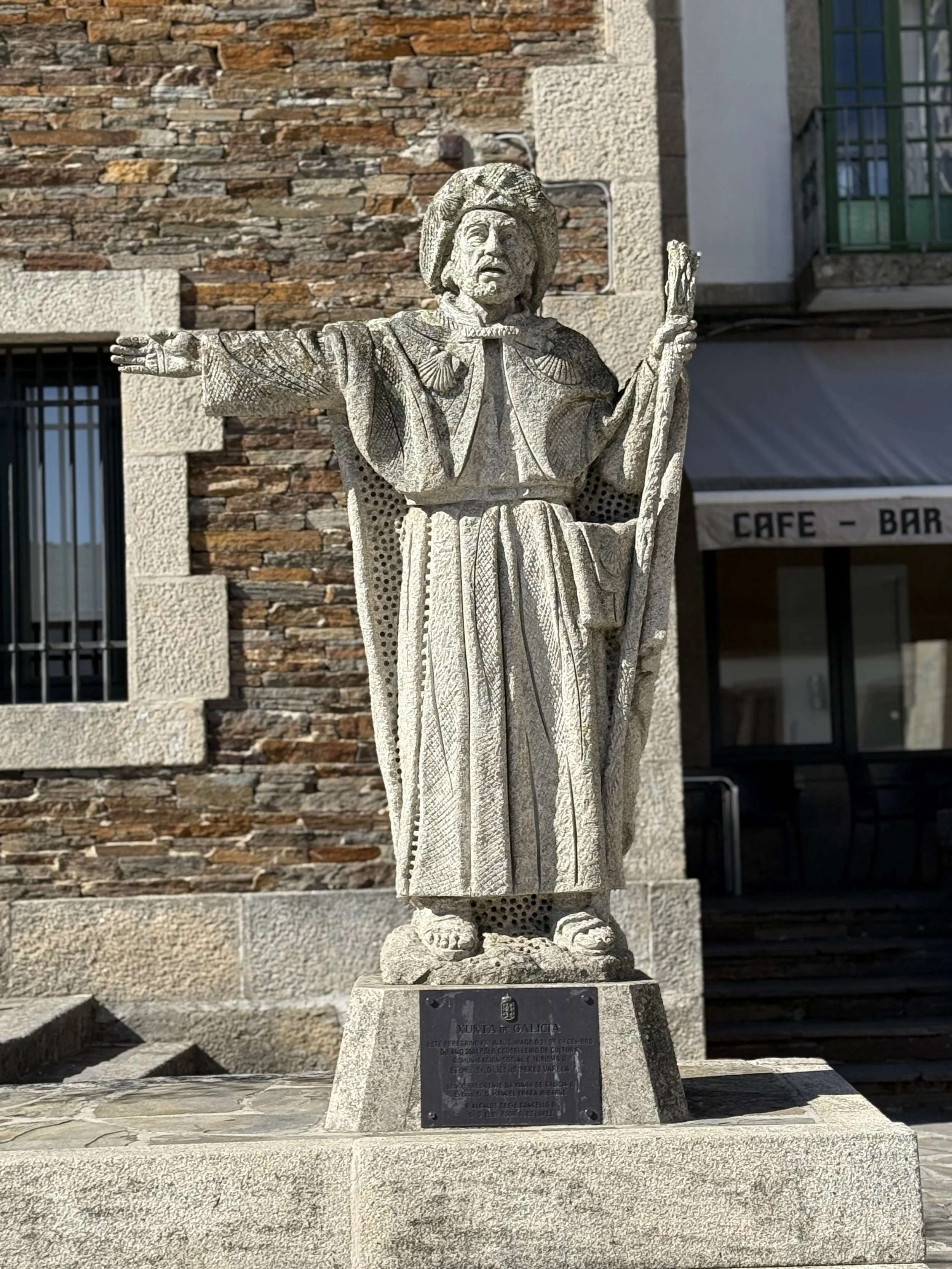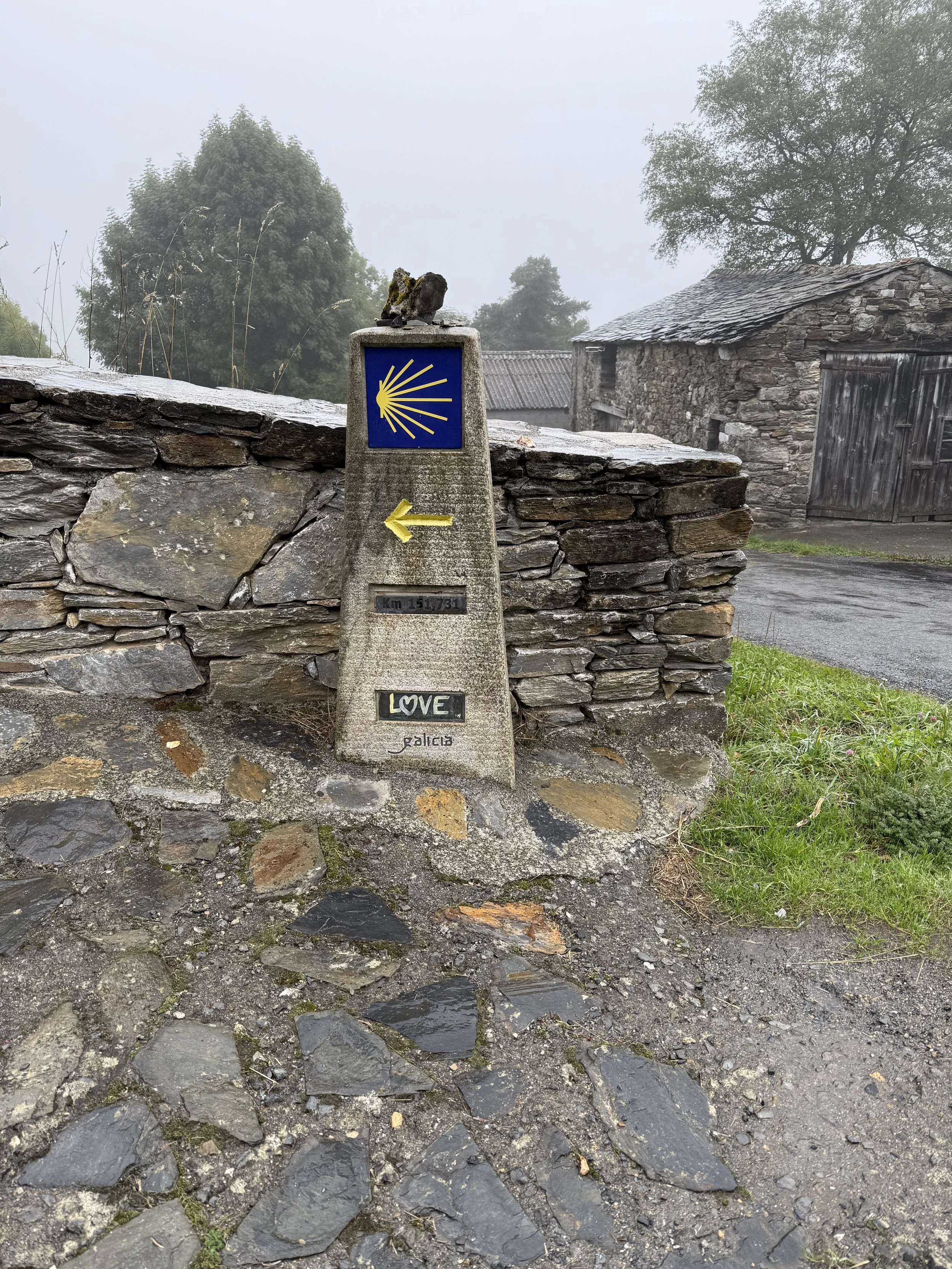The Role of Pilgrims in Spanish Culture and Tradition
Pilgrims and the Birth of the Camino
The Camino de Santiago began in the 9th century when, according to tradition, the tomb of St. James the Apostle was discovered in Santiago de Compostela.
This discovery quickly turned the city into a major pilgrimage destination, alongside Rome and Jerusalem.
As pilgrims began walking across Europe to reach Santiago:
Monasteries and churches were built to serve and guide them.
Hospitals and shelters sprang up along the routes to provide care and rest.
Markets and towns developed to supply pilgrims with food and necessities.
In many ways, the Camino shaped northern Spain’s infrastructure and economy. Even today, you’ll find towns that exist almost entirely because of the pilgrimage routes.
FOLLOW THE CAMINO CHRONICLES
FACEBOOK: THE CAMINO CHRONICLES
A pilgrim statue pointing the way to Santiago.
Pilgrims as Cultural Bridges
One of the most beautiful aspects of the Camino is how it brings together people from different backgrounds.
During medieval times:
Pilgrims carried stories, songs, and ideas from their home countries to Spain.
This cultural exchange influenced art, music, and architecture along the route.
Local Spanish communities gained exposure to new languages and customs.
Even now, when you walk the Camino, you’re likely to meet people from all over the world. Every conversation, shared meal, or evening in an albergue feels like a continuation of this centuries-old tradition of connection.
Related post: The Spiritual Side of the Camino: Reflections From the Road
Festivals and Celebrations Inspired by Pilgrims
Spanish culture is famous for its vibrant festivals, many of which have deep ties to the Camino and the pilgrims who travel it.
Feast of St. James (Fiesta de Santiago Apóstol)
Held every year on July 25th in Santiago de Compostela.
Celebrates Spain’s patron saint, St. James.
Features fireworks, music, parades, and religious ceremonies.
A local festival on the Camino de Santiago
Local Pilgrim Festivals
Throughout northern Spain, many towns along the Camino have smaller festivals honoring their history of welcoming pilgrims:
Traditional dances and costumes
Communal meals
Processions carrying the scallop shell, the symbol of the Camino
These celebrations reflect the pride communities feel for their role in the pilgrimage tradition.
Get Your Gifts and Gear Here
The Camino’s Impact on Food and Hospitality
Walking through Spain, you quickly notice how much of the local cuisine and hospitality has been shaped by centuries of pilgrims passing through.
Culinary Influences:
The pilgrim menu (menú del peregrino): a simple, affordable three-course meal served in many restaurants along the route.
Signature dishes like pulpo a la gallega (Galician-style octopus) and tarta de Santiago (St. James almond cake).
Tapas culture, perfect for sharing a meal with new friends.
Pulpo (Octopus) is a Galician specialty, it’s delicious!
Hospitality Tradition:
The spirit of service you feel in small family-run albergues.
A culture of kindness and generosity, rooted in centuries of hosting weary travelers.
There’s a sense that pilgrims are more than just tourists—they are honored guests carrying forward a sacred tradition.
Related post: The History of the Camino de Santiago and Why It’s Still Relevant Today
Symbols of Pilgrimage in Spanish Culture
Over the centuries, the Camino has given rise to powerful symbols that are now part of Spain’s cultural identity.
The Scallop Shell: Worn by pilgrims as a badge of honor and guidance.
Yellow Arrows: Painted on walls, trees, and stones to guide pilgrims toward Santiago.
The Botafumeiro: A giant incense burner swung in Santiago’s cathedral, symbolizing purification and welcome.
The Pilgrim Passport (Credencial): Stamped at each stop, it represents both the physical and spiritual journey.
These symbols can be seen not only along the Camino but also in Spanish art, souvenirs, and architecture.
Related post: Understanding Currency, ATMs, and Payments Along the Camino
Iconic marker of the Camino de Santiago-the scallop shell and the yellow arrow.
Pilgrims and the Spanish Economy
Pilgrims have always been an important part of the Spanish economy—both historically and today.
In medieval times:
Markets and trade routes thrived thanks to the flow of pilgrims.
Towns along the Camino grew wealthy by offering goods and services.
In modern times:
The Camino attracts hundreds of thousands of walkers each year.
Tourism supports local businesses, from small cafés to boutique hotels.
Many rural towns rely on pilgrim traffic to keep their communities alive.
Internal Linking Suggestions
Encourage readers to explore more Camino Chronicles guides:
The History of the Camino de Santiago and Why It’s Still Relevant Today
Camino on a Budget: 10 Money-Saving Tips for Pilgrims
How to Book Flights and Transportation for the Camino de Santiago
My Personal Perspective as a Pilgrim
As I prepared to walk my Camino, I was struck by the idea that I’ll be a part of this long chain of history.
When I stepped into the small villages, I was walking the same streets that pilgrims have walked for centuries. When I sat down for a simple pilgrim menu, I was sharing in a tradition that connected me to generations of travelers before me.
It was humbling to realize that while my reasons for walking may be unique, the experience itself ties me to something timeless and deeply human.
Why Pilgrims Still Matter Today
In today’s world, the role of the pilgrim goes beyond religion or history. Pilgrims are:
Cultural ambassadors, sharing stories and creating connections.
Economic supporters, helping to sustain rural Spanish towns.
Living links to history, keeping ancient traditions alive.
Seekers of meaning, reminding us of the power of slowing down and walking with intention.
The Camino continues to thrive because modern pilgrims carry forward the same spirit that began over a thousand years ago.
Conclusion: A Journey Shared Across Centuries
The Camino de Santiago is more than just a route—it’s a bridge between past and present, locals and visitors, tradition and transformation.
As pilgrims, we are not simply passing through Spain. We are part of its living story. Each step we take is a thread woven into the rich tapestry of Spanish culture and history.
When I finally reached Santiago, I knew I wasn’t just arriving at a destination. I was honoring the countless pilgrims who came before me—and becoming part of the vibrant legacy they helped create.
Call-to-Action:
If you’re planning your own pilgrimage, continue to explore other posts on The Camino Chronicles and follow @Camino.Chronicles for tips, inspiration, and resources to help you prepare for this life-changing journey.
Buen Camino,
Renae



